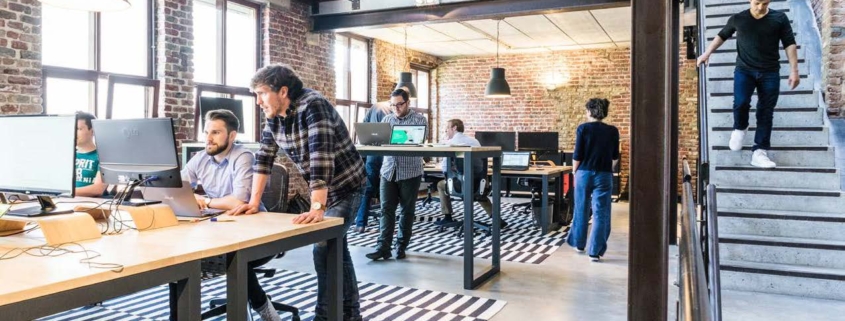Creating a Dynamic Workplace with AVUITY
Download a PDF of this case study.
BACKGROUND
A US based health insurance company has approximately 4,500 employees and eight buildings spanning two cities. AVUITY has helped this company:
- Increase space utilization pre-pandemic when employees complained of a “full” office.
- Move to a Hybrid Work model over the course of the pandemic.
PROBLEM #1
The company originally partnered with AVUITY in 2017 when employees began complaining of a “full” office. Employees were spending an average of 20 minutes per week searching for an available space, wasting the business approximately $4M per year in lost productivity. The company understood the problem but did not have a means to understand why this was happening or how to fix it.
SOLUTION #1
The company deployed over 700 AVUITY sensors in meeting rooms, offices, open collaboration spaces, and at floor entry/exists across two company buildings. Sensor data provided the company with two critical insights. First, it showed that the office space was not actually near full capacity. The real estate team was able to analyze heat maps and building stack plans to understand that utilization across the portfolio never approached 100%. The problem was not a lack of space, but rather, the problem was getting employees to understand what space was actually available to them. Second, it provided a means to show employees real time occupancy of different spaces. Employees were now able to quickly see what spaces were available and book those spaces using digital signage at high traffic areas in the office as well as through an employee Intranet.
The company calculated the payback on the AVUITY system to be only 8.3 months.
PROBLEM #2
Prior to the pandemic, the company was moving towards a Free Address model inside their office, but with the onset of the pandemic, this transition was accelerated. In 2022, the company leadership made the decision to move to an outright Hybrid Work environment with a virtual first policy that promotes working from home. This transition resulted in several questions about what to do with the current office portfolio, including:
- How much office space will be required going forward?
- How will employees use the space that is offered to them when they do decide to come into the office?
- What is the new “target utilization” for the office?
SOLUTION #2
With AVUITY sensors and software already installed, the team was able to analyze changes to office utilization throughout the pandemic. This provided insights into the types of spaces that employees use most often when they do come into the office (primarily collaboration spaces), how current utilization compares to pre-pandemic levels (still well below pre-Covid levels) and how often spaces are booked, but not used (AVUITY booking data seamlessly integrates with occupancy data).
While the company has yet to finalize decisions about what to do with their current office portfolio, AVUITY continues to provide the data and insights that inform multi-million-dollar real estate decisions.
CONCLUSION
The AVUITY team has worked closely with the company since 2017 and will continue to do so as questions about office improvement emerge. The company executive team is united in their desire to provide employees the best possible work environment and AVUITY is crucial piece of this process. AVUITY is the trusted resource for collecting data and providing insights about how employees use the space, which in turn drives design changes and benchmarking analysis that informs countless real estate decisions.




Leave a Reply
Want to join the discussion?Feel free to contribute!